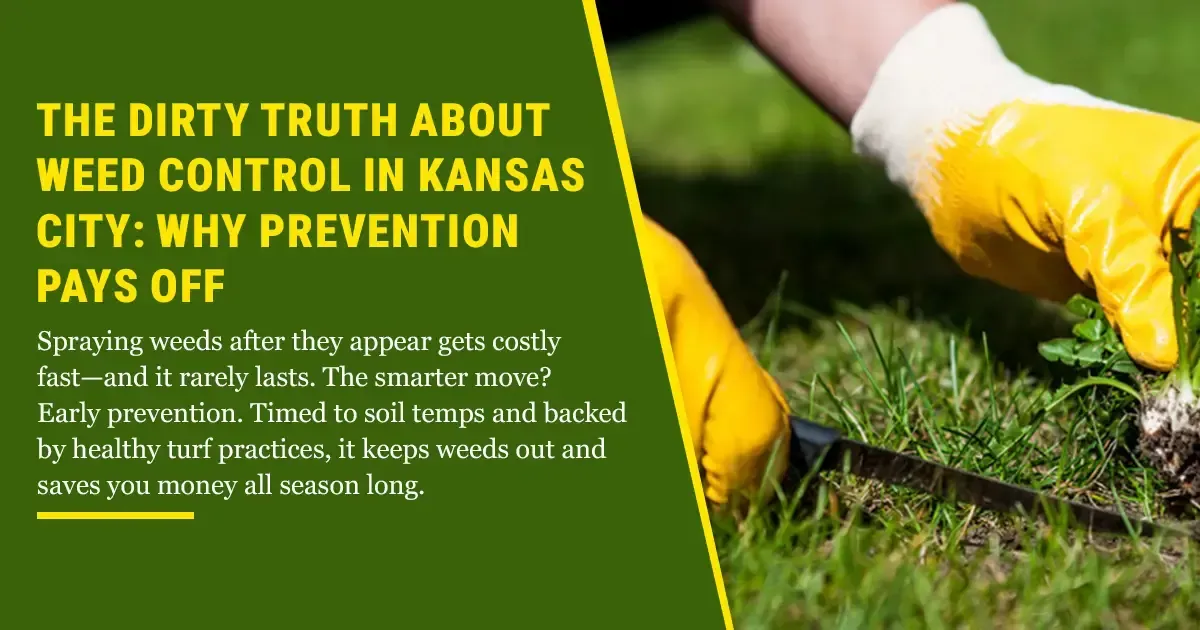Efficient Lawn Care Tips for Busy Schedules
Effortless Lawn Care: Mastering Time with Expert Tips
Maintaining a beautiful lawn is more than just a weekend project—it’s a critical factor for property value, curb appeal, and personal satisfaction. Yet, in today’s fast-paced world, busy schedules and competing priorities often leave little time for proper lawn care. Many homeowners find themselves struggling with the demands of modern life, where even routine lawn maintenance can feel overwhelming. In this article, we explore the challenges of time constraints in lawn care and offer practical strategies and innovative solutions to keep your lawn lush and well-kept without sacrificing your precious free time.
The Growing Challenge of Time Constraints in Lawn Care
A well-maintained lawn not only enhances the appearance of your home but also boosts its overall value. However, recent data indicates that an increasing number of Americans are experiencing severe time crunches. According to the U.S. Bureau of Labor Statistics, many workers have less than two hours a day left for personal projects including home and yard care. This shift in lifestyle has led to a decline in routine lawn maintenance, compromising both the aesthetic appeal and the investment value of properties.
Homeowners today must balance work, family, and social obligations with the demands of yard care. The result is often an overgrown lawn and missed opportunities to create a peaceful outdoor space. As the gap widens between busy schedules and the time-intensive nature of traditional lawn care, finding efficient methods to maintain your yard becomes essential.
Understanding the Impact of Neglected Lawn Care
When lawn care is neglected, the effects can be far-reaching. A poorly maintained lawn can lower your home's curb appeal, affecting not just its beauty but also its market value. Overgrown grass, uneven patches, and untrimmed hedges contribute to an unkempt look that can discourage potential buyers or visitors. Neglect can also invite pests and diseases, setting the stage for costly repairs down the line.
Beyond financial implications, a neglected yard can have a negative impact on personal well-being. A well-kept lawn is often associated with a sense of pride and peace. In contrast, the stress of managing a chaotic outdoor space can take a toll on mental health, making outdoor relaxation and family time less enjoyable. For families, a neat lawn offers a safe, attractive environment for outdoor activities, fostering a stronger bond with nature.
In addition, homeowners may fall into common traps while trying to manage yard care on their own. Rushing through tasks, improper mowing techniques, or using the wrong equipment can compound existing problems. These mistakes not only reduce the physical beauty of the lawn but may also lead to long-term damage. Recognizing these pitfalls is the first step towards implementing effective, time-saving strategies.
Time-Saving Lawn Care Tips
Finding ways to streamline your lawn care routine is essential in today’s busy world. Instead of dedicating hours each week to yard work, consider these actionable strategies designed to help you achieve a pristine lawn with less effort.
1. Choosing the Right Tools and Equipment
Investing in quality tools can make a significant difference. Modern equipment is designed to reduce manual labor and boost efficiency. For example, lightweight mowers and cordless trimmers are easier to handle and maintain. New ergonomic designs reduce fatigue, enabling you to work longer with less physical strain.
Also, consider battery-powered equipment that requires minimal maintenance and reduces the hassle of tangled cords. The improved technology in these tools ensures a smoother, more efficient cutting action, which results in a neater look for your lawn.
2. Embrace a Minimalist Mowing Approach
Frequent mowing isn’t always necessary if you adopt a minimalist approach. One efficient method is to allow your grass to grow slightly longer before mowing. This practice not only reduces the number of mowing sessions required but also promotes healthier grass that withstands drought better. Keep your mower blades sharp to ensure a clean cut, reducing the risk of damaging the grass.
3. Use Mulching Techniques
Mulching provides several advantages that directly correlate with time savings. When you mulch, you return the nutrients to the soil, eliminate the need for additional fertilizers, and reduce the frequency of watering. Mulching mowers can cut and shred grass clippings, leaving a finely textured layer that helps the lawn retain moisture and resist weeds. This natural process minimizes manual intervention, making it a key time-saving strategy.
4. Prioritize Seasonal Maintenance
Understanding the seasonal needs of your lawn can significantly reduce the time spent on year-round maintenance. Instead of treating all seasons with the same approach, tailor your efforts to coincide with seasonal growth patterns. For example, early spring is ideal for aerating and reseeding, while late summer might be better suited for pruning and weed control. This seasonal strategy ensures that critical tasks are done at the right time, reducing the overall maintenance workload.
5. Develop a Weekly Routine
Creating a manageable, weekly maintenance schedule can prevent lawn care from becoming a daunting chore. Dedicate specific tasks to different days rather than trying to accomplish everything in one session. For example, reserve one day for mowing, another for watering and weeding, and a different day for more extensive maintenance efforts. A structured plan not only makes the work seem less overwhelming but also ensures that every aspect of lawn upkeep is addressed consistently.
Creating an Efficient Lawn Maintenance Schedule
Designing your lawn care schedule around your busy lifestyle is key to maintaining a beautiful yard without requiring extensive daily attention. Here are the steps to build a schedule that works:
Analyze Your Lawn’s Needs
Begin by understanding the specific needs of your lawn. Different types of grass require different care routines. Observe your yard through the seasons for any signs of stress, such as discoloration or bare patches. This analysis helps determine the frequency of watering, mowing, and fertilizing necessary to keep your lawn in top shape.
Break Down the Tasks
Once you have a clear picture of the needs, create a checklist of all the tasks required for optimal lawn health—including mowing, watering, fertilizing, aerating, and seasonal treatments. Breaking these into daily, weekly, and monthly tasks makes them easier to manage.
Allocate Time Slots
Dedicate small time slots each week to lawn care, which can be adjusted as per the seasonal demands. Even just 15 to 20 minutes a few days a week can make a substantial difference in overall maintenance. For instance, watering and quick weeding sessions can be done during the early morning or late afternoon when temperatures are cooler.
Use Reminders and Apps
Digital apps can be invaluable for keeping track of your lawn care schedule. Many home maintenance apps offer customizable reminders that keep you on track with task deadlines. By integrating these tools into your routine, you minimize the risk of forgetting important maintenance tasks. These apps not only help track progress but also offer seasonal checklists tailored to your region.
Embracing Technology in Lawn Care Automation
Advances in technology have greatly simplified the process of lawn care. Many modern systems are engineered to reduce manual labor, offering homeowners the convenience needed in today’s time-constrained environment.
Smart Irrigation Systems
Traditional watering methods can often lead to waste and inefficiency. Smart irrigation systems, however, use sensors to determine when and how much to water your lawn. These systems adjust watering schedules based on weather conditions and soil moisture levels. As a result, not only does your lawn receive the optimal amount of water, but it also reduces water wastage. For homeowners looking to save time and resources, these systems are invaluable. You can find more details on the benefits of smart irrigation on trusted home improvement sites such as This Old House.
Robotic Mowers
Robotic mowers have revolutionized routine lawn care. These innovative devices work autonomously, cutting your grass on a regular schedule without requiring constant supervision. They are particularly useful for large lawns where manual mowing would otherwise be exceedingly time-consuming. With automated navigation systems and adjustable cutting times, robotic mowers ensure an even cut, keeping your yard consistently tidy.
Integration with Home Automation
For those who have adopted smart home technologies, integrating your lawn care system into a broader network can further simplify maintenance. Many smart irrigation systems and robotic mowers can be controlled via smartphone apps, offering real-time data and remote access. This level of convenience means that even when you’re far from home, you can ensure that your lawn is receiving the proper care it needs.
The Role of Data-Driven Decisions
Using technology to monitor lawn health isn’t just about automation; it also empowers you to make informed decisions on plant care. Soil sensors and monitoring apps provide data on moisture, temperature, and nutrient levels, helping you tailor your care routines precisely. This detailed insight minimizes guesswork and maximizes efficiency—ensuring your yard looks its best with minimal manual intervention.
When to Delegate: Professional Lawn Care Services
For many homeowners, the option to delegate lawn care tasks to professionals can alleviate much of the stress associated with busy lifestyles. Outsourcing routine maintenance to experts can be particularly beneficial when your schedule grows too tight for consistent yard care. Lawnscape Specialists, for example, offer comprehensive services that adapt to the specific needs of your lawn. Their approach is designed to blend seamlessly with your lifestyle, providing quality care without the added burden of micromanaging daily maintenance.
Professional services not only save time but also introduce a level of expertise and consistency that is hard to achieve on your own. Expert teams are well-versed in modern techniques and equipped with advanced tools, ensuring that every aspect of your lawn care is handled efficiently. Whether it’s routine mowing, seasonal treatments, or addressing pest issues, delegating to professionals can lead to a well-maintained lawn that stands out in your neighborhood.
While professional services come at an additional cost, consider it an investment in your property as well as your personal well-being. By outsourcing certain tasks, you free up your schedule for activities that matter most—whether that’s spending time with family, pursuing a passion, or simply relaxing in a beautiful outdoor space.
Steps to Implementing Time-Saving Lawn Care Strategies
Transforming your approach to lawn care starts with a few practical steps. Here is a step-by-step guide to help you incorporate these tactics into your routine:
1. Assess Your Lawn’s Current Condition
Begin by taking a close look at your yard. Note areas that are overgrown, identify patches of dry or uneven grass, and determine how often you perform essential tasks like mowing and watering. This initial assessment provides the baseline for your new schedule.
2. Develop a Detailed Maintenance Plan
Using the checklist you’ve created, set up a weekly, monthly, and seasonal plan. Break down larger projects into smaller tasks that can be easily managed over time. Writing down a detailed plan can serve as a roadmap, ensuring that no essential maintenance step is overlooked.
3. Invest in Efficient Tools and Technology
Evaluate the tools you are currently using and consider upgrades that save time. For example, switching to a robotic mower or a smart irrigation system can dramatically reduce the manual effort required. Research product reviews and performance data to find equipment that suits your needs and budget.
4. Integrate a Digital Reminder System
Use digital tools, such as calendars or specialized home maintenance apps, to set reminders for each task. These systems help ensure you’re keeping up with your schedule, even during particularly busy weeks. This digital integration can make managing your lawn care routine almost automatic.
5. Monitor Progress and Adjust as Needed
Regularly evaluate the effectiveness of your new routine. Notice if any areas are consistently neglected or if tasks are taking longer than expected. Adjust your schedule and techniques based on these observations. Keeping a record of your progress can also help you see improvements over time and make value-driven adjustments.
6. Delegate When Necessary
Finally, recognize when it might be more efficient to outsource maintenance tasks. If scheduling conflicts or unexpected events disrupt your routine, consider scheduling a professional service for that period. A team from Lawnscape Specialists, for instance, can provide consistent care and help maintain the high standards your lawn deserves.
Making Lawn Care a Part of Your Lifestyle
Integrating yard maintenance into your regular routine can transform lawn care from a burdensome task into a fulfilling, almost therapeutic activity. Establishing a balanced schedule means that lawn care becomes just another part of your weekly agenda—a small commitment that yields long-term benefits.
Over time, as your lawn grows healthier and more attractive, you’ll likely see a boost in your overall satisfaction. A well-kept lawn contributes to your home’s aesthetic appeal and becomes a personal retreat where you can relax and recharge. Instead of viewing yard work as an interruption, see it as an opportunity to connect with nature and enjoy the outdoors.
For those who struggle with time management, small adjustments can lead to significant improvements. Even a minor reorganization of your weekly schedule can free up enough time to care for your lawn adequately. As you ease into this routine, you may find that the act of maintaining your outdoor space alleviates stress and adds a touch of order to your life.
If you ever feel overwhelmed, remember that professional help is always available. Lawnscape Specialists is a trusted partner that can work around your busy schedule, ensuring that the beauty of your lawn is never compromised. This collaborative approach between homeowner and professional can transform lawn care into a more manageable, even enjoyable, part of your lifestyle.
Frequently Asked Questions
What are the most important steps for efficient lawn care?
Efficient lawn care begins with a thorough assessment of your lawn’s needs followed by a detailed, scheduled plan. Invest in quality tools, integrate smart technology like automated irrigation systems, and use time-saving practices such as mulching and seasonal maintenance strategies. Breaking tasks into smaller, daily routines can make the overall process more manageable.
How can technology simplify my lawn maintenance?
Modern technology offers a range of tools that significantly cut down manual labor. Smart irrigation systems, for example, adjust watering schedules based on weather and soil moisture, minimizing water use and preventing overwatering. Robotic mowers operate on set schedules and ensure an even cut across your yard. Integrating these technologies into your routine enables data-driven and efficient lawn care.
When is it better to hire professional lawn care services?
Professional lawn care is an attractive option when your busy schedule makes consistent, quality maintenance challenging. Homeowners who experience dramatic changes in their daily routines or those facing complicated lawn issues can benefit from the expertise offered by professional services. Delegating tasks to a reputable provider such as Lawnscape Specialists helps maintain curb appeal without the stress of doing it yourself.
Can small changes in my routine really impact the overall health of my lawn?
Absolutely. Even minor adjustments—such as creating a routine mowing schedule, integrating smart technology, or updating your equipment—can significantly enhance your lawn’s health. The key is consistency; regular monitoring and timely interventions go a long way in preventing problems and ensuring a vibrant, attractive yard.
Do I need to invest in expensive tools to achieve efficient lawn care?
Not necessarily. While quality tools and modern technology can boost efficiency, many practical and affordable solutions are available. Prioritize equipment that is durable and designed for ease of use. Over time, the upfront investment in efficient tools can save you money by reducing the need for frequent replacements and by improving the overall quality of your lawn care routine.
Bringing It All Together
Busy schedules and modern lifestyles no longer have to be setbacks in your pursuit of a beautiful, well-maintained lawn. With the right strategies and a commitment to streamlined, time-saving practices, you can transform your yard into a vibrant, stress-free space that adds value to your property and peace to your life.
We began by recognizing the challenges faced by today’s homeowners, illustrated by real data and keen observations on lifestyle constraints. From there, we explored the impacts of neglected lawn care—both the financial implications and the personal toll it may take. By detailing actionable tips, integrating technology, and outlining a practical step-by-step plan, we have provided a comprehensive guide for those who wish to reclaim control over their lawn maintenance.
If you’re looking to reduce the daily hassle and enjoy a lush, healthy lawn, now is the time to make changes. Consider incorporating efficient tools and digital scheduling into your routine, and if necessary, delegate the more demanding tasks to trusted professionals. Lawnscape Specialists stands ready as a reliable partner to help you achieve consistent and effective lawn care, ensuring your yard remains a sanctuary amid a busy life.
Your next step is clear—apply these time-saving strategies and enjoy the benefits of a beautiful, low-maintenance lawn. Whether you manage the work yourself or enlist professional support, the investment in your home’s curb appeal and your personal well-being will undoubtedly pay off.
Take a moment today to assess your lawn’s needs and create a tailored maintenance schedule that fits your lifestyle. With persistence and the right approach, effortless lawn care can become an integral and rewarding part of your daily routine.










